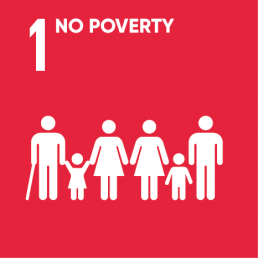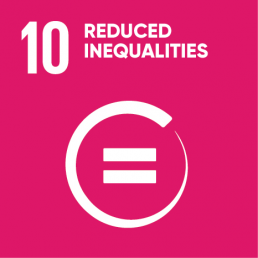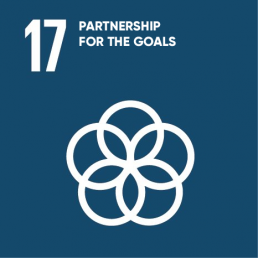THE NEED
Good health and wellness is depicted by a state of complete physical, mental and social well being. Health is all-encompassing and integral to societies overall function and equilibrium and is irrespective of the differences in location, economic status, education, gender etc. It is one conversation that affects everyone and as such, requires the concerted efforts of everyone from government to individuals to organizations to ensure the guaranteed existence of and access to care or preventive systems.
Against the glaring picture of infrastructure deterioration, staggering infant mortality rates, incessant strike actions of health workers, under-performing primary healthcare facilities and the poor ranking of 187th out of 191 countries in terms of healthcare delivery, according to the WHO, the Nigerian health sector has not fared well on many fronts.
The holes in our health sector are indicative of lagging infrastructure development, brain drain caused by poor working conditions of our medical personnel and the absence of a functional universal healthcare access mechanism. But as disheartening as these reports seem, there is not a complete lack of activity or health strengthening efforts from different angles and so, it is pertinent that we not only highlight what the current realities are, the key issues but we also chart the solutions to these challenges;
These are the top issues we want to direct our action towards;
Maternal and Child Health (MNCH)
Of primary concern is the maternal and child health mortality rate. Nigeria reportedly contributes a fairly significant quota to the global maternal mortality rates at 19% and has the highest in Sub-Saharan Africa of maternal deaths. From low levels of awareness to discriminatory cultural attitudes and practices to poverty which threatens access to quality healthcare, many barriers contribute to the high maternal mortality rates. The 2018 UN SDG progress report states that although the maternal mortality ratio has declined by 37 per cent since 2000, in 2015, 303,000 women around the world still died due to complications during pregnancy or childbirth. A joint report (Trends in Maternal Mortality 1990 to 2015 by WHO, UNICEF, World Bank and United Nations Population Fund) estimates that Nigeria has approximately 58,000 maternal deaths. Put differently, at least 800 women die in every 100,000 live births.
Child survival, on the other hand, according to a report from the Society for Family Health (SFH), is threatened largely by nutritional deficiencies and illnesses, particularly malaria, diarrheal diseases, acute respiratory infections (ARI), and vaccine-preventable diseases (VPD), which accounts for the majority of mortality in childhood. A 2017 World Bank report states that per 1,000 live births, 100 children under 5 die yearly which totals about 10%.
Family planning
When population growth rate isn’t managed, it inadvertently affects economic growth and the teeming population burdens and overstretches the already limited infrastructural resources. Religion, cultural perceptions and low budgetary allocation to health continue to affect the adoption of family planning methods, a program that has been noted to be one investment that grants huge economic and health returns for any nation. Although Nigeria pledged to achieve 36.6% Contraceptive Prevalence Rate (CPR) by 2020 and an annual CPR growth rate of 2%, its CPR lingers at 24.2% for all women and 27.6% for married women in 2018 while its unmet contraceptive need was at 16.6% showing that contraceptive adoption is still very low.
Mental Health
The Federal Ministry of Health stated last year that 3 in every 10 Nigerians suffer from mental illness. With a population of about 200 million Nigerians, this ratio pegs the number of persons living with mental illness to about 60 million which is very significant. For a highly misunderstood and ignored health challenge, the statistics are alarming and not unconnected to the high suicide rate of recent. Mental disorders range from depression to dementia to substance abuse to schizophrenia to bipolar to even intellectual disabilities like autism. In 2017, the World Health Organisation (WHO) said of the 48 million persons silently suffering from the various mental illnesses in Nigeria, no fewer than 7 million suffer from one of the most ignored and misunderstood form of mental disorder in the country, which is depression. This, according to WHO, represents 3.9 per cent of the entire population. It also said 4.9million Nigerians, that is 2.7 per cent of the population, suffer anxiety disorders.
Sexual and Reproductive health
Reports from a 2018 research work authored by five lecturers from the University of Nigeria and published on Bio Med Central Health Services Research states that 22.3% of Nigeria’s estimated population of 190 million are adolescents and one in 20 of these adolescents contracts sexually transmitted infections each year. The report also notes that half of all cases of HIV infection take place among people under the age of 25 years and in fact, about 40% of new HIV infection occurs among young people in Nigeria. Perhaps, the prevalent early sexual debut, multiple sexual partners incidence and early marriage amongst adolescents’ contribute to increasing their HIV vulnerability.
Statistics from the research publication further state that the median age at first sexual intercourse is 17.6 and 21.1 years for women and men respectively, while the median age at first marriage is 18.1 and 27.2 years for women and men respectively. Teenage and unwanted pregnancies are also problems of adolescents especially the unmarried. And although the abortion law and policy in Nigeria prohibits legal access to legal abortion services, about 1.25 million induced abortion procedures is reported yearly by unskilled providers and many have serious complications without obtaining the post-abortion care needed. These indicate that the utilization of SRH services by the adolescents in Nigeria is low, arising from disparities in both provision and accessibility of the services and also lack of priority to adolescents’ SRH.
The standpoint of the United Nations Population Fund (UNFPA) is hinged on the fact that couples and individuals have the right to decide freely and responsibly the number, spacing and timing of their children, and to have the information and means to do so and all decisions concerning reproduction should be made free from discrimination, coercion, and violence. However, barriers to accessing sexual and reproductive health information and services still exist especially among the youth and contribute to teenage pregnancy, the spread of STIs, unsafe abortion and maternal mortality. As such, there is a major need for an increase in the availability and use of integrated sexual and reproductive health (SRH) services (including family planning, maternal health and HIV) in such a way that they are gender-responsive and meet human rights standards for quality of care and equity in access.
Drug and Substance Abuse
The challenge of drug and substance abuse is one of global concern and constitutes the indiscriminate, illegal, unprescribed use of medications or other chemical substance that alter natural biological functions of the body or reduce inhibitions and give one a “high” or influence deviant behaviour that constitutes a hazard or nuisance to other members of society. A number of factors such as lack of guidance and supervision by parents, failing family value systems, peer pressure, poverty, unemployment, social media influence, porous borders and unsupervised drug distribution chain all serve to contribute to the prevalence of drug abuse in the country.
Of major concern is the fact that these drugs or substances typically possess addicting properties that fosters repeated use and eventual dependence. Even more worrying is the fact that drug/substance abuse is no respecter of demography or gender in Nigeria, the prevalence rate cuts across both young (teenagers) and old, urban and rural divides, male and female alike. The determining factor of what drugs to abuse may however differ based on affordability and social status. And so, drug abuse is highly a determinant of prevailing socio-cultural norms and what is deemed mainstream or a social group rite of passage.
A joint survey by the United Nations Office in Drugs and European Union UN reports that about 14.3 million Nigerians between age 15 and 64 have abused drugs in the past year. According to a Pulse.ng publication, a study of secondary schools in Northern Nigeria used by Wikipedia states that, “Substance abuse ranged between 1.1 ‑ 3.5% with a male to female ratio of substance abuse of 3:1. 3% smoked cigarettes, benzodiazepines abused by 3.5% and solvents by 1.5%. Abuse of cocaine and heroin was 1.1% and 1.3% respectively.” Also, an alcohol consumption study conducted by the World Health Organization placed that fifty-six percent (56%) of Nigerians over the age of 15 consume alcohol.
From prescription drugs like cough syrup, to Codeine, to Tramadol, to laxatives to sniffing ammonia easily gotten from the toilet to substances like cannabis, alcohol, heroin, cocaine, nicotine, marijuana (weed) etc. many individuals partake in the harmful use of these substances as a result of influence from peer pressure or dissatisfaction at life or the search for relief from emotional health challenges.
The effects of this abuse can either be long or short term depending on the substance abused and the effect on their physical health reportedly ranges from adversely affecting cognition and nervous function to cancer to heart diseases to liver disease to poor nutrition to reducing an individual’s productivity & contribution to society, self-care and even predisposes the abuser to theft in order to sustain the habit.
The challenge of drug abuse is multi-dimensional and should not be addressed only from the lens of legalization and criminalization of drug offenders (both drug peddlers and abusers) by law enforcement agents but also as a health challenge that requires comprehensive treatment and rehabilitation. This should also feed the action plan for the government, organizations and the society at large in responding to the menace.
Malaria
Malaria is a major public health problem in Nigeria drawing from statistics that set Nigeria as the highest out of fifteen countries who accounted for 80% of global malaria deaths in 2016. Malaria is a risk for 97% of Nigeria’s population, of which under-5 children and pregnant women are the most vulnerable. Covering 91 countries, the WHO World Malaria Report 2017 , reports an increase in the number of malaria cases in 2016 at 216 million cases from the reported 211 million cases of 2015. In addition, there was no marked, positive difference in the estimated global tally of malaria deaths between 2016 (445,000) and 2015 (446,000).
With an increase in malaria cases, the goal of ending malaria by 2030 is also affected by the gap in funding and budgetary allocation and requires concerted action both for prevention and treatment through the most recommended preventive measures of hygiene, sleeping with treated mosquito nets, spraying insecticides etc and access to the right, immediate treatment once detected.
Polio
According to the WHO, Polio is a highly infectious disease caused by a virus. It invades the nervous system, and can cause total paralysis in a matter of hours. Mainly affecting the under 5 years population, the virus is transmitted by person-to-person spread mainly through the faecal-oral route or, less frequently, by a common vehicle (for example, contaminated water or food) and multiplies in the intestine. 1 in 200 infections leads to irreversible paralysis (usually in the legs). Among those paralysed, 5% to 10% die when their breathing muscles become immobilized. There is no cure for the disease and the only mode of prevention is via the correct administration of vaccines.
As long as a single child is affected, other children are at risk. As a result, polio eradication is the core focus of global action and strong surveillance and immunization programmes have been launched to battle the disease. According to reports, Nigeria is close to being certified polio-free with the last case of wild poliovirus reported in August 2016 in Borno. If no new cases are detected by August, 2019, Nigeria will attain polio-free status.
Poor health care infrastructure
The health sector image is reflective of the lack of a structure that works efficiently, infrastructure deterioration, staggering infant mortality rates, incessant strike actions of health workers, slow emergency response, under-performing primary healthcare facilities and poor ranking of 187th out of 191 countries in terms of healthcare delivery, according to the WHO. Sadly, the health sector has not fared well in terms of budgetary allocation.
Cancer & heart defects
The International Centre for Investigative Reporting states that Nigeria has the highest death rate of cancer in the world, with 4 out of every 5 cases leading to death. According to World Health Organisation (WHO), over 100,000 Nigerians are diagnosed with cancer annually, with 80,000 of them dying from the disease — an average of 240 Nigerians/day or 10 Nigerians/hour. Furthermore, the WHO has predicted that Nigeria can expect a 75 per cent increase in cancer-induced death by 2030. With the lack of functioning radiotherapy machines and the deteriorating health system impeding the treatment of numerous cancer patients and promoting the spread and degeneration of the disease, a cancer diagnosis is akin to a death sentence.
Cardiovascular disease (CVD), on the other hand, is an insidious killer. As a result of the gap in awareness and culture of actively cultivating a healthy lifestyle, many people are unaware of the ravaging effects of some of the health challenges they suffer. From the commonly known hypertension and the attending high blood pressure (HBP) to cancers and other heart and lung diseases especially congenital heart defects in children with over 700,000 babies at risk. Primary triggers include a poor diet, high cholesterol levels & salt intake, physical inactivity/ poor exercise regimen, diabetics, tobacco use and harmful alcohol use resulting in obesity, high blood pressure and ultimately, stroke, heart failure and other CVDs.
Nigerians need to be sensitized about the risk and triggers for these diseases. The Nigerian Heart Federation reports that cholesterol is associated with about 4 million deaths yearly which pose a huge concern. Routine cholesterol level and blood pressure checks should be adopted as mainstream on the same level most Nigerians are aware of malaria and the need to treat malaria.
There is also a need for improved, subsidized access to treatment of CVDs. Managing these diseases are typically capital intensive.
Medical tourism
Nigerians are reported to be among the world’s most notable medical tourists, with tens of thousands travelling in search of medical services. Reports show that Nigeria loses about US$1 billion every year to medical tourism. While our healthcare sector is fraught with several challenges, the incidence of medical tourism is a bane of the Nigerian health care sector. The holes in our health sector are indicative of lagging infrastructure development, brain drain caused by poor working conditions of our medical personnel and the absence of a functional universal healthcare access mechanism.
In the 2018 budget, N340.45 billion was allocated to the health sector, representing a meagre 3.9% of the total budget which is a far cry from her signed commitment in 2001 alongside other African leaders to devote at least 15% of the annual budget to the health sector. The budgetary allocation for 2018 is even lower than its allocation in the last two years and it has been highlighted that health came in 12th behind other sectors like Power, Works and Housing in the total budget. In relatable terms, the allocation shows that the government spends approximately N1,800 on each citizen’s health in the year.
A double-pronged approach is needed to address the incidence of medical tourism. Upgrade of the deteriorating infrastructure, provision of cutting edge medical technology and a solution to brain drain in the health sector calls for immediate action. Secondly, Nigeria needs to be positioned as a competitive tourist destination for medical care just as India or Dubai to reduce the economic loss from the massive export of Nigerians seeking medical care outside the country.
Public Health Emergency Response
In the last two years, Nigeria has been hit by more than one epidemiology outbreak, leading to the death of thousands. WHO risk assessment reports show that between December 2016 and June 2017, a total of 14,513 cases of Meningitis was reported with about 1,166 deaths from 24 states and in the early part of 2018, there were 1081 suspected cases of Lassa fever and 90 deaths across 18 states in the country. From 2017 to 2018, a total of 269 cases of monkeypox outbreak was also reported across 25 states with about 115 cases
ABOUT THE GOOD HEALTH AND WELL BEING PROJECT
Good Health and Wellness is a 10-year project designed to empower grassroots development champions (GDCs) to undertake advocacy campaigns, carry out health outreaches and community infrastructure projects that will ultimately contribute to addressing the key challenges in the sector especially in line with the targets of the Sustainable Development Goals (SDGs). This project is designed to impact at least 10 million Nigerians over the project duration.
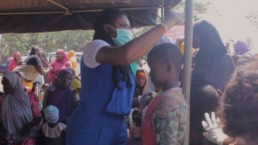
THE ACTIONPLAN
Over the next 10 years, this project is focused on tackling the 10 specific issues in healthcare we are addressing, using these approaches;
ADVOCACY CAMPAIGNS
We will carry out advocacy Campaigns that reach and impact Nigerians. The focus of our campaigns will be to increase awareness on the issues, educate and inform Nigerians to make informed health decisions, push for policies and laws that tackle key health care issues.
Some key advocacy campaigns we will plan to carry out are not limited to the following
- Advocate for budgetary allocation and implementation of the National Health Act of 2014 with the planned introduction of 1% consolidated revenue fund for basic healthcare provision fund and widespread reforms across the cadres of the healthcare system.
- Increase budgetary allocation and ultimately foster the increase in CPR rate from the current 24.2% in 2018 to the 36.6% goal we pledged to achieve by 2020 and access to FP commodities.
- Collaborate with organizations working in the mental health space and grassroot development campaigns to undertake advocacy campaigns targeted at increasing awareness about mental health, bursting the prevalent myths/stigma around some of these mental disorders and through the establishment of walk-in mental health centers that foster safe access to mental health care and support for persons in need of these services.
- Partnering with youth-led SRHR organizations, to provide technical support through inspiring, empowering and amplifying GDCs who will pioneer advocacy campaigns to community stakeholders and facilitate the provision of integrated SRH services in their communities that will ultimately address and reduce the high rate of unsafe abortion, teenage pregnancy and HIV vulnerability among young persons.
- In contributing to action against drug abuse, the project plan aims to undertake these approaches; Widespread multi-media advocacy campaigns to facilitate drug education and public health awareness.
- Treatment for both oncology is highly capital-intensive and require an enormous injection of funding in these departments for the procurement of radiotherapy machines that is seriously lacking in the country. As such, funding/increased budgetary allocation and transparent management of disbursed funds is of paramount.
- Deliberately change the narrative of healthcare in the country. We need to actively cultivate a sense of appreciation for our healthcare institutions, phasing out poor quality care standards and seek to attract foreign direct investment that can augment budgetary allocation for the health sector. Despite acknowledging the restrictions by medical governing bodies, hospitals need to make a concerted effort to market their value potential by building a strong brand that highlights the services they render and the measurable advancements in care they are capable of offering. In addition, the project will undertake advocacy for the development of policies/laws that help to ensure that the government officials and high net-worth/prominent citizens actually patronize our healthcare sector which will in turn drive the provision of standardized exclusive, high-cost or free, low-cost care healthcare services in Nigerian hospitals.
- The action plan for addressing the challenge of access to cancer treatment is through an aggressive, consolidated funding/grant sourcing campaign.
- Through the partnerships, advocacy campaigns and the establishment of mental health centres across 36 communities, the project aims to contribute to reducing the current figure of 60 million persons living with mental illness to about 20 million persons over the 10-year project duration.
HEALTH OUTREACHES
Our plan is to carry out health outreaches and interventions that provide relief at scale to over 1,000,000 Nigerians. Some key health outreaches we plan to carry out are not limited to the following
- Undertaking malaria-relief outreach programs in grassroots communities. As such, through working partnerships and grants, these outreaches will contribute to the provision of treated mosquito nets and medication for 25 primary health care centres across communities in the country.
- Through working partnerships with organizations like Rotary International working to eradicate polio, we aim to deploy our GDCs to carry out intensive polio awareness and immunization outreaches in their communities especially the hard-to-reach communities. This will serve to achieve the goal of a polio-free Nigeria by August, 2019.
- Through partnerships with health organizations, GDCs and individuals, the action plan for CVD management and care is to conduct medical sensitization and treatment outreaches in communities to foster awareness of these risk factors as well as provide free/subsidized supplies of CVD medications.
COMMUNITY PROJECTS
We plan to carry out community infrastructure projects that build the necessary infrastructure that tackles the health issues we are targeting. Some of the key community infrastructure projects we will carry out are not limited to the following
- Working partnerships with existent rehabilitation centers and drug/mental health units of hospitals that ensure a referral point for GDCs to provide treatment and counselling support for drug abusers in their communities; Establish 6 drug treatment and support centers across the 36 states of the federation that can ultimately impact 50,000 individuals; Advocacy for legislation, sanctions and reinforced monitoring of routes, entry and exit points and agents within the drug distribution chain to ensure compliance.
CAPACITY BUILDING
Our goal is to deploy capacity building initiatives that improve the capacity of health care works and Nigerians to address the health issues we are targeting. Some key capacity building initiatives we will inspire and empower grassroots development champions to carry out are not limited to the following
- Equipping and boosting the capacity of our health responder agencies as well as routine capacity building for healthcare workers like the National Center for Disease Control, NEMA etc. to manage epidemiology outbreaks. To set up 6 case management centers across the nation for emergency response.
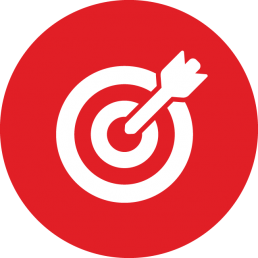
PROJECT GOALS
- Our advocacy campaigns will increase awareness on the health issues we are directing focus towards and educate over 10 million Nigerians, enabling them to make informed health decisions.
- Our planned health outreaches and interventions will provide relief that impacts over 1,000,000 Nigerians across various communities.
- Our advocacy campaigns will engage government and inspire communities to push for health infrastructure projects that will improve access to quality healthcare for over 1 million Nigerians.
- Our engagement with government will also push for design and implementation of policies and laws that tackle key healthcare issues and improve the access to healthcare delivery which will directly impact the lives of at least 10 million Nigerians across the nation. .

